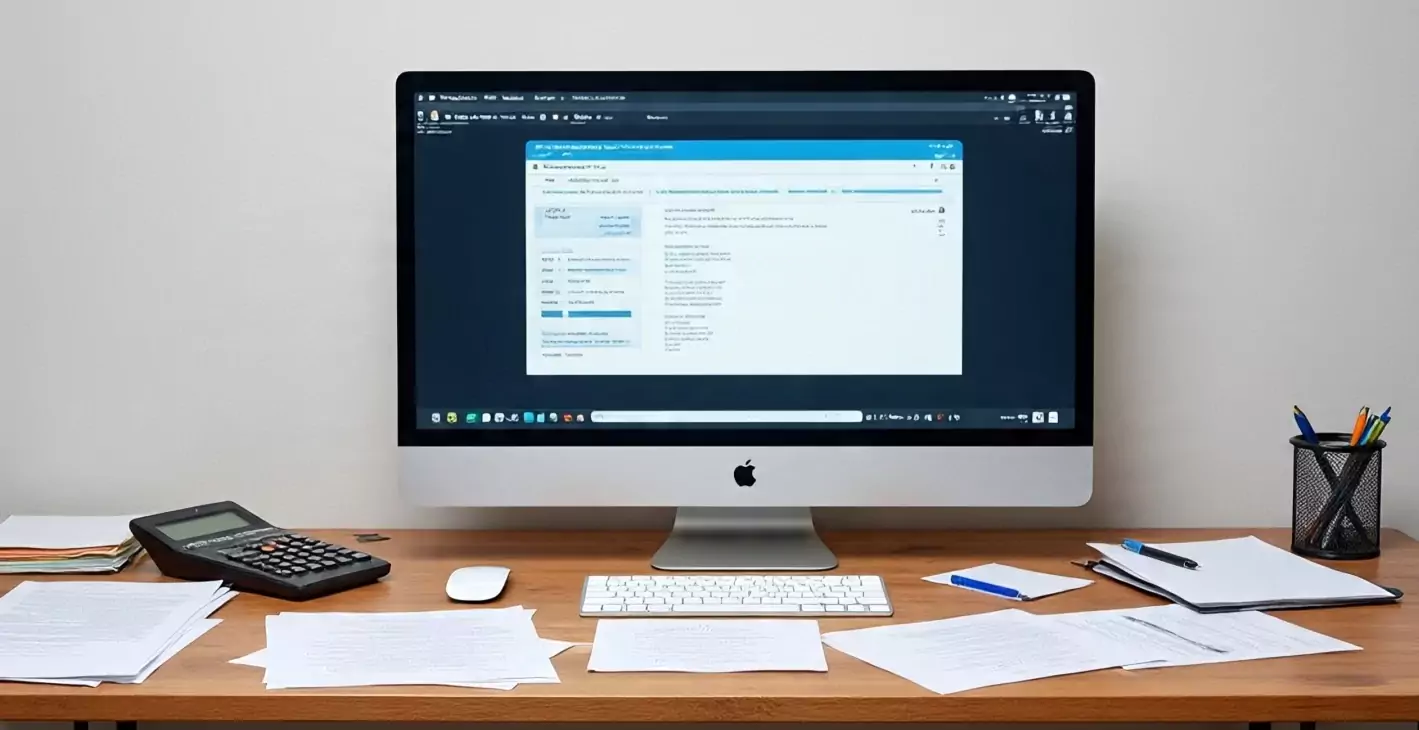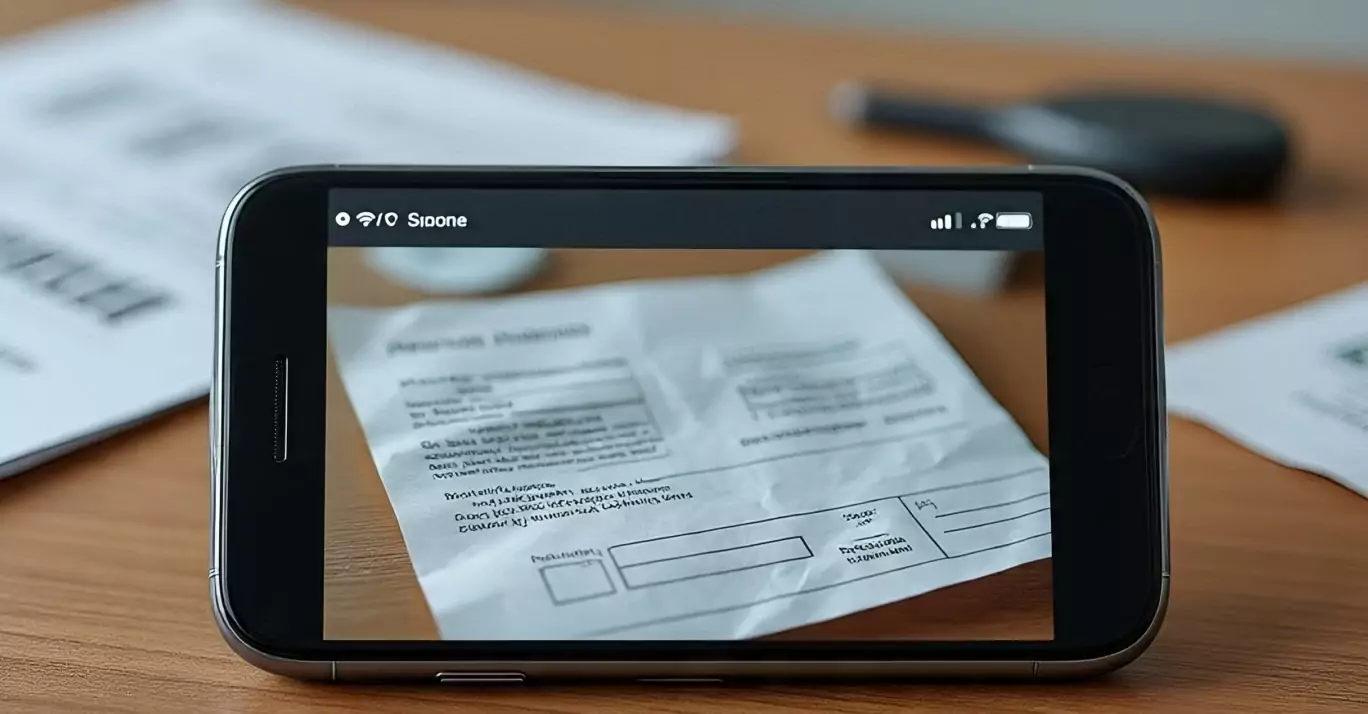
Invoice Processing Automation Guide: Transform Your Business Operations in 2025
Invoice Processing Automation Guide: Transform Your Business Operations in 2025
Three months ago, I watched my accountant spend six hours manually entering invoice data that our new automation system now processes in twelve minutes. Same accuracy, same results, but instead of burning through expensive human labor on mindless data entry, she's now focusing on strategic financial analysis that actually grows the business.
That transformation didn't happen overnight. It took months of research, testing different automation platforms, and fine-tuning workflows to get it right. But the payoff has been extraordinary: we've cut invoice processing time by 87%, eliminated data entry errors, and freed up our finance team to work on projects that actually matter.
Here's what I learned that most business owners never realize: invoice processing automation isn't just about saving time—it's about fundamentally changing how your business operates. When you eliminate the bottleneck of manual invoice handling, cash flow improves, vendor relationships strengthen, and your team can focus on growth instead of paperwork.
But automation done wrong is worse than no automation at all. Choose the wrong platform or implement it poorly, and you'll create more problems than you solve. I've tested every major automation solution, made plenty of expensive mistakes, and learned what actually works in real business environments.
The Hidden Cost of Manual Invoice Processing
Most business owners think invoice processing is just part of doing business—a necessary evil you tolerate because customers and vendors need to get paid. That's exactly the mindset that's costing you thousands of dollars every month without you realizing it.
The Real Numbers Behind Manual Processing
- Average processing time per invoice: 14 minutes for manual entry
- Average cost per invoice: $12.90 when accounting for labor and overhead
- Error rate: 5-8% for manual data entry (each error costs $40-60 to fix)
- Late payment penalties: 15-30% of businesses miss early payment discounts
- Storage and retrieval costs: $20-40 per filing cabinet per month
- Audit preparation time: 40-60 hours annually for document gathering
The Opportunity Cost Nobody Talks About
But the real killer isn't the direct costs—it's what your team isn't doing while they're buried in invoice processing:
- Strategic financial analysis: Understanding cash flow patterns and optimizing payment terms
- Vendor relationship management: Negotiating better rates and terms
- Process improvement: Identifying inefficiencies in other business areas
- Growth planning: Forecasting and budgeting for expansion
- Exception handling: Resolving complex financial issues that actually need human judgment
When your bookkeeper is spending 60% of their time on data entry, they're not spending it on the analysis and strategy that could save or make your business serious money.
How Modern Invoice Automation Actually Works
Forget everything you think you know about automation from five years ago. Modern invoice processing systems use artificial intelligence and machine learning that make old OCR technology look like stone age tools.
The Technology Stack That Powers Modern Automation
Advanced OCR (Optical Character Recognition)
- Reads text from any format: PDFs, photos, scanned documents, even handwritten notes
- 99.5%+ accuracy rates on printed text
- Handles multiple languages and fonts automatically
- Extracts data from complex layouts and tables
Machine Learning Data Extraction
- Learns your vendor patterns and invoice formats over time
- Automatically identifies invoice numbers, dates, amounts, and line items
- Handles variations in format without manual configuration
- Improves accuracy with each processed document
Intelligent Workflow Routing
- Routes invoices based on amount, vendor, or department automatically
- Manages approval workflows with escalation rules
- Integrates with existing accounting systems and ERPs
- Handles exceptions and error cases gracefully
Integration Capabilities
- Direct connection to QuickBooks, Xero, SAP, Oracle, and other accounting systems
- Email integration for automatic invoice capture
- API connections for custom business applications
- Bank integration for payment processing and reconciliation
The Automation Champions: Platform Deep Dive
QuickBooks Bill Capture: The Small Business Standard
Best For: Small to medium businesses already using QuickBooks ecosystem
QuickBooks Bill Capture feels like a natural extension of software you're already using. The integration is seamless, the learning curve is minimal, and it handles 90% of small business invoice processing scenarios without breaking a sweat.
What Makes QuickBooks Bill Capture Special:
- Native QuickBooks Integration: Data flows directly into your existing chart of accounts
- Mobile App Excellence: Take photos of invoices on the go, processed automatically
- Smart Vendor Matching: Learns your vendor patterns and auto-populates details
- Approval Workflows: Multi-level approval routing based on amount thresholds
- Payment Integration: Schedule and process payments directly from the platform
- Real-time Sync: Changes appear in QuickBooks immediately
QuickBooks Bill Capture Pricing:
- Simple Start + Bill Capture: $30/month (up to 25 bills monthly)
- Essentials + Bill Capture: $60/month (up to 100 bills monthly)
- Plus + Bill Capture: $90/month (unlimited bills)
The Reality Check: Works brilliantly within the QuickBooks ecosystem, but switching to different accounting software later becomes complicated. The OCR accuracy is excellent for standard invoices but struggles with very complex layouts.
Xero Bills: The User Experience Champion
Best For: Businesses that prioritize clean interfaces and user-friendly workflows
Xero built their invoice automation with one philosophy: make it so simple that anyone can use it without training. The result is software that feels intuitive from day one, with powerful features hidden behind an elegantly simple interface.
Xero's Standout Features:
- Hubdoc Integration: Advanced document capture and processing included
- Bank Feed Matching: Automatically matches invoices to bank transactions
- Multi-Currency Support: Handles international vendors seamlessly
- Purchase Order Matching: Three-way matching between PO, invoice, and receipt
- Expense Claim Integration: Employees can submit receipts through mobile app
- Analytics Dashboard: Insights into spending patterns and vendor performance
Xero Pricing (Including Automation):
- Early (5 bills/month): $13/month
- Growing (20 bills/month): $37/month
- Established (Unlimited): $70/month
Pro Tip: Xero's strength is in its ecosystem of connected apps. If you use multiple business tools, Xero's marketplace offers better integration options than most competitors.
Bill.com: The Enterprise Powerhouse
Best For: Growing businesses that need robust approval workflows and vendor management
Bill.com started as a simple bill pay service but evolved into a comprehensive accounts payable automation platform. Their strength lies in handling complex business scenarios that would break simpler systems.
Bill.com's Advanced Capabilities:
- Multi-Entity Management: Handle multiple companies or divisions from one platform
- Advanced Approval Workflows: Complex routing rules based on any criteria
- Vendor Portal: Suppliers can submit invoices and track payment status
- GL Coding Automation: AI learns your coding patterns and suggests categories
- Budgeting Controls: Prevent approvals that exceed budget allocations
- Audit Trail: Complete documentation of every action and approval
Bill.com Pricing:
- Essentials: $45/month (up to 20 bills)
- Team: $65/month (unlimited bills, advanced features)
- Corporate: $99/month (enterprise features, dedicated support)
The Trade-off: More features mean more complexity. Bill.com requires more setup time and training but handles sophisticated business requirements that simpler platforms can't manage.
ABBYY FlexiCapture: The OCR Specialist
Best For: High-volume processing with complex document types and formats
ABBYY built the OCR technology that powers many other automation platforms, so going direct gives you access to the most advanced document processing capabilities available.
ABBYY's Technical Advantages:
- Superior OCR Accuracy: 99.8% accuracy even on poor quality documents
- Custom Document Types: Configure processing for any document format
- Batch Processing: Handle thousands of documents simultaneously
- Multi-Language Support: Process documents in 200+ languages
- Complex Table Extraction: Extract data from complex multi-page tables
- API Integration: Connect to any business system or custom application
ABBYY Pricing:
- FlexiCapture Cloud: $0.10-0.50 per page processed
- On-Premise License: $15,000-50,000+ depending on volume
- Hosted Solution: Custom pricing based on requirements
When to Choose ABBYY: If you process more than 1,000 invoices monthly or deal with highly variable document formats, ABBYY's advanced capabilities justify the higher cost and complexity.
Implementation Strategy: Getting It Right the First Time
Phase 1: Assessment and Planning (Week 1-2)
Document Your Current Process
- Count monthly invoice volume by source (email, mail, portal)
- Track time spent on each processing step
- Identify common error types and their frequency
- Map approval workflows and identify bottlenecks
- List all vendor formats and special requirements
Define Success Metrics
- Processing Time: Current average vs. target (aim for 80% reduction)
- Error Rate: Current percentage vs. target (aim for sub-1%)
- Early Payment Discounts: Current capture rate vs. target
- Staff Time Allocation: Hours freed up for strategic work
- Cash Flow Impact: Improved payment timing and forecasting
Phase 2: Platform Selection and Setup (Week 3-4)
Pilot Program Design
- Choose 50-100 invoices representing your typical mix
- Include various vendors, amounts, and complexity levels
- Process the same invoices through 2-3 automation platforms
- Measure accuracy, processing time, and user experience
- Calculate ROI based on actual results, not vendor promises
Integration Planning
- Map data fields between automation platform and accounting system
- Configure chart of accounts and coding rules
- Set up approval workflows matching your business requirements
- Create vendor database with payment terms and contact information
- Establish security protocols and user access controls
Phase 3: Team Training and Rollout (Week 5-6)
Training Strategy
- Champions First: Train enthusiastic early adopters to become internal experts
- Hands-On Practice: Use real invoices from your business, not generic examples
- Exception Handling: Focus on what to do when automation fails
- Gradual Rollout: Start with simple invoices, add complexity over time
- Feedback Loops: Regular check-ins to address issues and optimize workflows
Change Management
- Communicate the "why" behind automation—efficiency, not job elimination
- Show how freed-up time enables more interesting, valuable work
- Celebrate early wins and share success stories
- Address concerns and resistance with patience and data
- Provide ongoing support and additional training as needed
Phase 4: Optimization and Scaling (Week 7-12)
Performance Monitoring
- Track actual vs. projected metrics weekly
- Identify patterns in processing errors or delays
- Monitor user adoption and identify training gaps
- Analyze vendor performance and processing complexity
- Measure impact on cash flow and payment timing
Continuous Improvement
- Refine approval workflows based on actual usage patterns
- Add new vendor templates for better OCR accuracy
- Optimize integration settings for smoother data flow
- Expand automation to additional document types
- Develop custom reports and analytics dashboards
ROI Analysis: Proving the Business Case
Direct Cost Savings (Easily Quantifiable)
Labor Cost Reduction
- Processing time: 14 minutes → 2 minutes per invoice
- For 200 invoices/month: 2,800 minutes → 400 minutes saved
- At $25/hour loaded cost: $1,167/month savings
- Annual savings: $14,000
Error Reduction Savings
- Manual error rate: 6% → Automated error rate: 0.5%
- For 200 invoices/month: 12 errors → 1 error
- At $50 per error correction: $550/month savings
- Annual savings: $6,600
Early Payment Discount Capture
- Current capture rate: 30% → Automated capture rate: 85%
- Average discount: 2% on $50,000/month payables
- Additional discounts captured: $550/month
- Annual savings: $6,600
Storage and Handling Cost Elimination
- Paper storage: $200/month → Digital storage: $50/month
- Printing and filing: $150/month → Eliminated
- Document retrieval time: $300/month → $50/month
- Annual savings: $7,200
Indirect Benefits (Harder to Quantify but Equally Important)
Cash Flow Improvement
- Faster processing enables more strategic payment timing
- Better visibility into upcoming payments improves cash flow forecasting
- Reduced late payment penalties and interest charges
- Ability to negotiate better payment terms with improved processing reliability
Strategic Time Allocation
- Finance team spends time on analysis instead of data entry
- Better vendor relationship management through timely payments
- Improved financial reporting and business intelligence
- Faster month-end close processes
Risk Reduction
- Audit trail automation reduces compliance risks
- Digital backups prevent document loss
- Standardized processes reduce operational risk
- Better fraud detection through automated pattern recognition
Investment Requirements
Year 1 Costs
- Software subscription: $3,600-7,200 annually
- Implementation consulting: $2,000-5,000 one-time
- Training and change management: $1,000-3,000 one-time
- Integration development: $1,000-5,000 one-time
- Total Year 1 Investment: $7,600-20,200
Ongoing Costs
- Software subscription: $3,600-7,200 annually
- Maintenance and support: $500-1,000 annually
- Additional training: $500-1,000 annually
- Total Ongoing Annual Cost: $4,600-9,200
Net ROI Calculation
- Annual quantifiable savings: $34,400
- Annual ongoing costs: $4,600-9,200
- Net annual benefit: $25,200-29,800
- ROI percentage: 250-400%
- Payback period: 3-7 months
Advanced Automation Strategies
Multi-Document Workflows
The real power of automation emerges when you connect invoice processing to related business processes:
Three-Way Matching Automation
- Purchase order → Invoice → Receipt matching
- Automatic approval for perfect matches
- Exception routing for discrepancies
- Variance analysis and reporting
Expense Report Integration
- Employee expense receipts processed with same automation
- Policy compliance checking built into workflow
- Mileage and per-diem calculations automated
- Credit card statement reconciliation
Contract and Purchase Order Management
- Contract terms automatically applied to invoices
- Budget tracking against purchase orders
- Renewal and expiration date monitoring
- Vendor performance metrics tracking
AI-Powered Insights and Analytics
Spending Pattern Analysis
- Identify opportunities for vendor consolidation
- Seasonal spending pattern recognition
- Anomaly detection for unusual transactions
- Budget variance analysis and forecasting
Vendor Performance Optimization
- Payment terms analysis and negotiation opportunities
- Invoice accuracy scoring by vendor
- Early payment discount optimization
- Vendor risk assessment based on payment patterns
Cash Flow Forecasting
- Predictive modeling for upcoming payments
- Scenario planning for different payment strategies
- Working capital optimization recommendations
- Integration with sales forecasting for complete cash flow picture
Security and Compliance Considerations
Data Protection Requirements
Financial Data Security Standards
- SOC 2 Type II Certification: Verify platform meets security controls
- 256-bit AES Encryption: Data protection at rest and in transit
- Multi-Factor Authentication: Required for all user accounts
- Role-Based Access Control: Limit access based on job responsibilities
- Regular Security Audits: Third-party verification of security practices
Compliance Framework Support
- SOX Compliance: Audit trail and internal controls documentation
- GDPR Requirements: Data residency and privacy controls
- Industry Standards: HIPAA, PCI DSS, or sector-specific requirements
- Tax Regulations: Document retention and audit support features
Risk Management Strategies
Fraud Prevention
- Duplicate invoice detection across time periods
- Vendor validation against approved vendor lists
- Unusual pattern detection for potential fraud
- Segregation of duties enforcement in approval workflows
Business Continuity
- Cloud-based solutions with 99.9% uptime guarantees
- Automatic backup and disaster recovery procedures
- Offline processing capabilities during system maintenance
- Vendor lock-in prevention through data export capabilities
Audit Trail and Documentation
Complete Activity Logging
- Every action timestamped and attributed to specific users
- Document version history and change tracking
- Approval pathway documentation for compliance
- System access logs and security event monitoring
Regulatory Reporting
- Automated generation of compliance reports
- Integration with external audit firms and regulators
- Document retention policy enforcement
- Electronic signature and approval validation
Common Implementation Pitfalls and How to Avoid Them
Technical Integration Mistakes
Mistake: Rushing the Setup Process
- Problem: Poor field mapping causes data corruption in accounting system
- Solution: Spend extra time on integration testing with real data
- Best Practice: Run parallel processing for 2-4 weeks before full transition
Mistake: Ignoring Data Quality
- Problem: Garbage in, garbage out—poor OCR results from bad source documents
- Solution: Train vendors on optimal document formats and submission methods
- Best Practice: Create document quality guidelines and share with all vendors
Mistake: Over-Automation Too Quickly
- Problem: Complex automation rules create more problems than they solve
- Solution: Start with simple automation and add complexity gradually
- Best Practice: Automate high-volume, low-complexity invoices first
Change Management Failures
Mistake: Insufficient Training
- Problem: Staff avoid new system and revert to manual processes
- Solution: Invest in comprehensive training and ongoing support
- Best Practice: Create internal champions and peer mentoring programs
Mistake: Not Addressing Resistance
- Problem: Fear of job loss or change creates active sabotage
- Solution: Communicate clearly how automation enhances rather than replaces jobs
- Best Practice: Involve skeptical employees in the selection and implementation process
Business Process Oversights
Mistake: Ignoring Exception Handling
- Problem: 10-15% of invoices don't fit standard automation patterns
- Solution: Design robust exception workflows from the beginning
- Best Practice: Plan for manual intervention on complex cases
Mistake: Inadequate Vendor Communication
- Problem: Vendors continue sending invoices in non-optimal formats
- Solution: Proactively educate vendors on new submission requirements
- Best Practice: Provide vendor portal access for direct electronic submission
Future Trends: Where Invoice Automation is Heading
Artificial Intelligence Advancements
Natural Language Processing
- Understanding invoice context and unusual terms
- Processing invoices written in conversational language
- Automatic translation of multi-language invoices
- Intent recognition for complex business scenarios
Predictive Analytics
- Forecasting invoice volumes and cash flow requirements
- Predicting vendor payment preferences and terms
- Anomaly detection for potential fraud or errors
- Optimization suggestions for payment timing and terms
Blockchain and Smart Contracts
Immutable Invoice Records
- Tamper-proof invoice and payment history
- Automatic verification of invoice authenticity
- Smart contract execution for automatic payments
- Cross-border payments with cryptocurrency integration
Integration Ecosystem Evolution
Universal API Standards
- Seamless integration across all business systems
- Real-time data synchronization without custom development
- Marketplace of pre-built integration connectors
- Industry-specific workflow templates
IoT and Automated Ordering
- Inventory sensors trigger automatic purchase orders
- Service completion sensors generate automatic invoices
- Asset management systems integrate with maintenance invoicing
- Supply chain integration for just-in-time processing
Making Your Decision: Platform Selection Framework
After implementing automation systems for dozens of businesses, here's my framework for choosing the right platform:
For Small Businesses (Under 100 Invoices/Month)
Choose QuickBooks Bill Capture or Xero Bills - Integration with your existing accounting software trumps advanced features you don't need. Focus on simplicity and reliability.
For Growing Businesses (100-500 Invoices/Month)
Choose Bill.com or FreshBooks Automation - You need more sophisticated approval workflows and vendor management but don't want enterprise complexity.
For Enterprise (500+ Invoices/Month)
Choose ABBYY FlexiCapture or Kofax AP Agility - Volume justifies investment in best-in-class OCR and processing capabilities. Custom integration requirements demand flexible platforms.
For Complex Approval Requirements
Choose Bill.com or SAP Concur - Multi-level approvals, budget controls, and compliance requirements need enterprise-grade workflow engines.
For International Operations
Choose platforms with strong multi-currency and multi-language support - Xero, Bill.com, or NetSuite Automation handle global operations better than locally-focused solutions.
Your Implementation Roadmap
Month 1: Foundation
- Audit current processes and establish baseline metrics
- Research and demo 2-3 automation platforms
- Calculate ROI projections based on your specific situation
- Secure budget approval and project team assignment
Month 2: Selection and Setup
- Run pilot programs with finalist platforms
- Make final platform selection based on pilot results
- Configure integration with accounting system
- Set up initial workflow and approval rules
Month 3: Implementation and Training
- Train key team members on new system
- Begin processing invoices through automation
- Run parallel manual processing for backup
- Address issues and optimize workflows
Month 4-6: Optimization and Scaling
- Analyze performance against baseline metrics
- Expand automation to additional document types
- Train additional team members and expand usage
- Implement advanced features and integrations
Ready to transform your invoice processing? The businesses that implement automation first gain competitive advantages that compound over time. While your competitors are still drowning in paperwork, you'll be using those saved hours to grow your business and improve your bottom line.
Don't wait for the "perfect" time—it doesn't exist. The sooner you automate invoice processing, the sooner you start recapturing thousands of dollars in hidden costs and freeing your team to focus on what really matters: growing your business.


